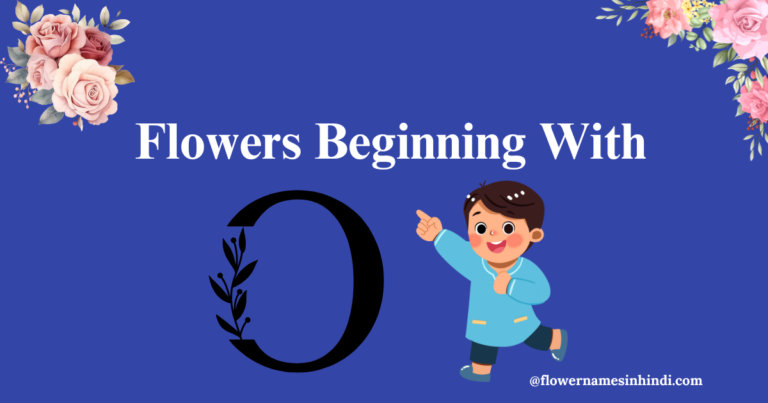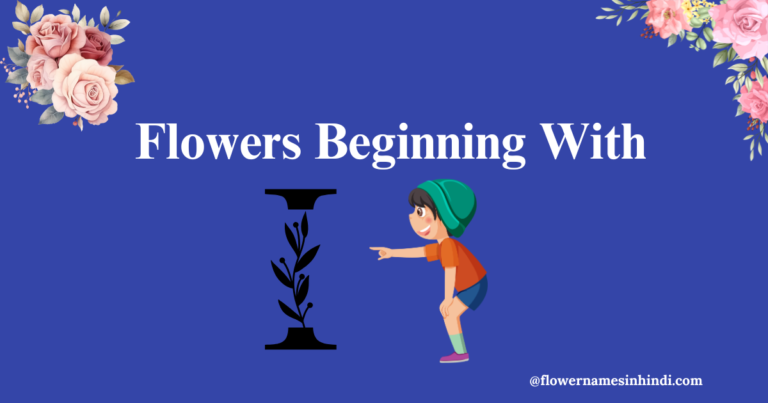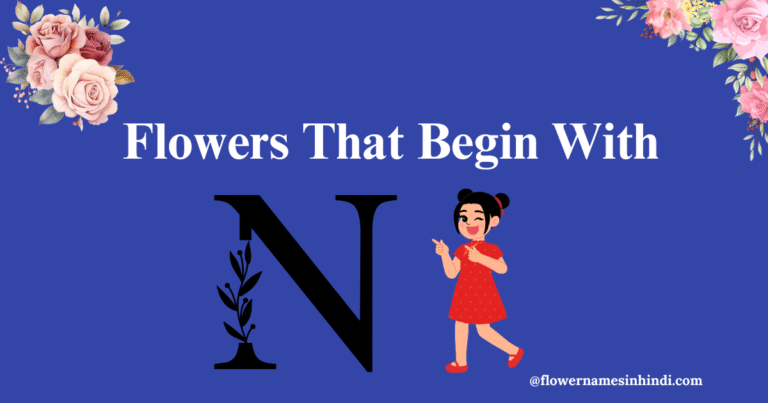💞14+ Unique Flowers Starting with R | HD Images
When it comes to nature’s most enchanting creations, flowers that start with R never fail to steal the spotlight. From the timeless elegance of roses to the vibrant charm of ranunculus and the resilience of rudbeckia, these blooms bring color, meaning, and character to gardens and floral arrangements alike. 🌹✨
In the previous article, we discussed the stunning arrangement of flowers starting with Q.
In this blog, you’ll discover flowers that bring color, elegance, and individuality to any space, all beautifully captured in stunning photographs.
Here is a quick snapshot of 7 beautiful flowers beginning with the letter R:
✅ Rose
✅ Rain Lily
✅ Red Hot Poker
✅ Rhubarb
✅ Ranunculus
✅ Rudbeckia
Roses: Flowers Starting with R

Roses are woody perennial flowering plants included in the family Rosaceae. The word “rose” derives from the Latin word “rosa,” which is derived from a Greek word that most likely arose from a Persian term.
The pointy growths along a rose stem are usually referred to as “thorns,” although they are prickles outgrowths of the epidermis.
Roses grow best in well-drained, rich soil with a pH between 6.0 to 6.5. Mulching with compost will supply nutrients to the soil while maintaining soil structure.
Some roses are so rare that a single bloom can cost thousands of dollars. The Juliet Rose, developed by David Austin, took 15 years to create and sold for over $5 million, making it the world’s most expensive rose!
| Feature | Detail |
| Botanical name | Rosa |
| No. of species | 140-180 species |
| Symbol | Love, Passion, Friendship, Purity |
| Blooming time | Spring to Fall, some varieties bloom year-round |
| Origin/ Location | Native to Asia, Europe, North America, and Northwest Africa |
Rain Lily

The rain lilies are temperate and bulbous plants of the family Amaryllidaceae. Species of this genus vary in their morphology.
Different features like bulb size, bulb tunic color, and leaf shape aid in the identification of specific species. They produce little, star-shaped blooms in pink, white, and yellow.
The ideal conditions are well-drained soils and full sun to light shade. They can tolerate a wide range of pH. Plant bulbs 2-3 inches deep and 4-6 inches apart.
| Feature | Detail |
| Botanical name | Zephyranthes |
| No. of species | About 200 |
| Symbol | Hope, renewal, resilience |
| Blooming time | Typically, in late summer, often after rain |
| Origin/ Location | Native to Central and South America |
Red Hot Poker

Red Hot Poker, or Torch Lily, is a perennial flowering plant belonging to the Asphodelaceae family. These flowers are tubular-shaped and range in colors from red through orange to yellow.
The genus contains herbaceous and evergreen plants. Herbaceous species and hybrids have narrow, grass-like leaves that range in length from 10 to 100 cm (4 to 39 inches). On the other hand, evergreen species have larger, strap-shaped foliage that can reach 1.5 meters (5 feet).
In regions where Red Hot Pokers grow, they use their tall, tubular flowers to trap and hold water droplets after rainfall. This helps nourish their roots and aids their survival during dry spells!
| Feature | Detail |
| Botanical name | Kniphofia |
| No. of species | 73 |
| Symbol | Strength, energy, passion |
| Blooming time | Late spring to early autumn |
| Origin/ Location | Native to South Africa |
Rhubarb- Flowers Beginning With R
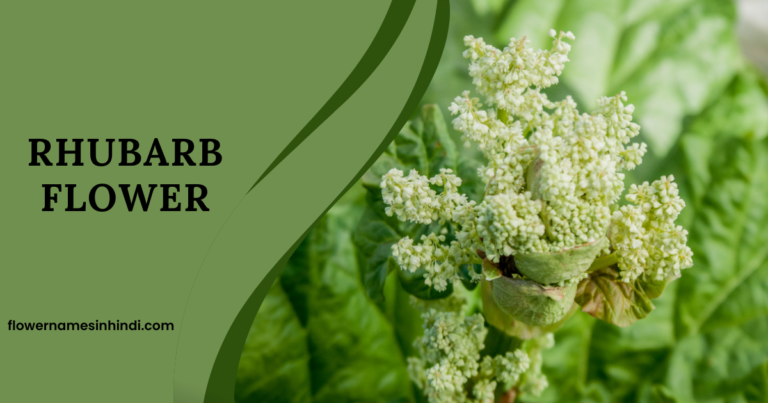
Rhubarb is the fleshy, edible stalks of Rheum species and hybrids (culinary rhubarb) from the Polygonaceae family that are cooked and consumed. The name rhubarb comes from Latin rheubarbarum and Greek rha barbaron, meaning ‘foreign rhubarb.’
The little flowers form large, leafy inflorescences in shades from greenish-white to rose-red. Rhubarb thrives in well-drained, fertile soil (pH 6.0-6.8) with full sun to light shade.
Rhubarb is extensively grown with greenhouse production; it is accessible throughout the year. It requires rainfall and a yearly cold spell of up to 7-9 weeks at 3 °C (37 °F), known as ‘cold units’, to thrive.
Although rhubarb is often treated as a fruit in pies and desserts, it’s actually a vegetable! Its edible stalks are used in cooking, but the leaves are toxic due to oxalic acid and should never be eaten.
| Feature | Detail |
| Botanical name | Rheum rhabarbarum |
| No. of species | About 60 |
| Symbol | Vitality, abundance, nourishment |
| Blooming time | Late spring to early summer |
| Origin/ Location | Siberia, Himalayas |
Ranunculus
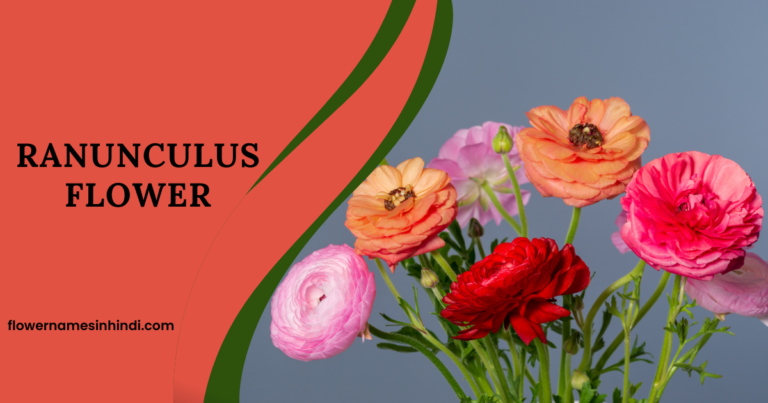
It is known for its vibrant colors, such as yellow, red, pink, and orange, and multi-layered petals. It is a large genus of the Ranunculaceae. Members of the genus are known as buttercups, spearworts, and water crowfoots.
They are vulnerable to frost; thus, planting them after the latest frost date is critical. Ranunculus plants may grow to heights of 8-12 inches and produce several flowers per plant, making them great for cutting gardens, borders, and container arrangements.
Ranunculus flowers are sometimes called “million-petaled” because their blooms can have so many layers of petals that they almost appear to have no center. A single flower might seem to have over 30 petals, giving it a lush, ruffled appearance.
| Feature | Detail |
| Botanical name | Ranunculus asiaticus |
| No. of species | 1700 |
| Symbol | Radiant charm, attractiveness, and rich in meanings |
| Blooming time | Late winter to early spring |
| Origin/ Location | Asia, Europe, Mediterranean |
Rudbeckia
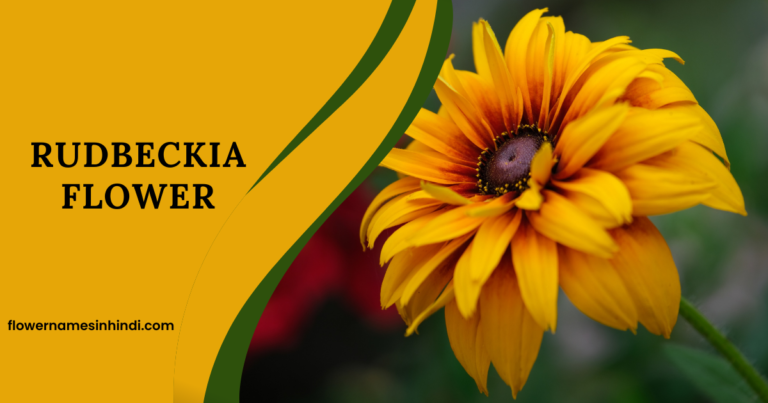
Rudbeckia, a genus belongs to the Asteraceae or composite family. The blooms of this gensu are with elevated centre discs in black, brown hues of green. These characteristics give them the popular names of coneflowers and black-eyed-susans.
These are herbaceous, generally perennial plants (some annual or biennial) with simple or branching stems and heights ranging from 0.5 to 3.0 meters. The leaves are spirally arranged, whole or strongly lobed, and 5-25 cm long.
Rudbeckia is self-seeding, which means it will naturally spread and multiply in your garden year after year.
| Feature | Detail |
| Botanical name | Rudbeckia hirta |
| No. of species | Around 20 |
| Symbol | Encouragement, motivation, and justice |
| Blooming time | Mid-summer to early fall |
| Origin/ Location | North America |
Rose Mallow : Flowe Starting With R
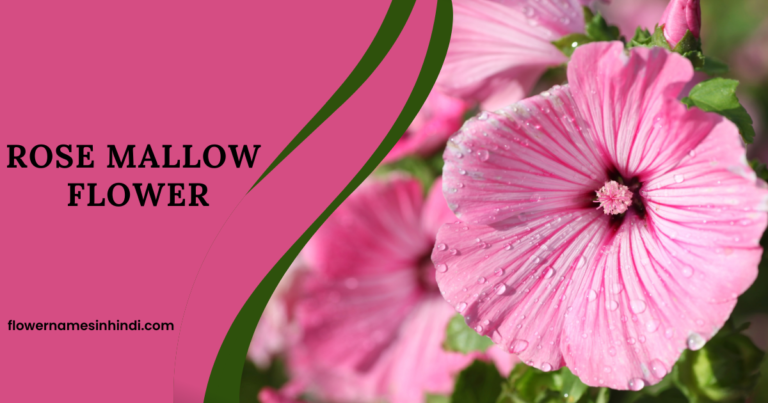
Rose mallow is a cold-tolerant perennial wetland plant that may form enormous colonies. Other common names are the swamp rose-mallow, crimson-eyed rosemallow, or eastern rosemallow. This flowering plant belongs to the Malvaceae family.
This tall plant can reach up to the height of 1.5-2.5 meters (4.9-8.2 feet), with blossoms up to 20 cm (7.9 inches) wide. It serves as a larval host for the common checkered skipper, grey hairstreak, Io moth, and pearly wood nymph.
The flowers bloom from summer to fall and grows best in fertile, wet, well-drained soil with full light. Organic matter, such as compost, promotes soil fertility while also improving drainage.
| Feature | Detail |
| Botanical name | Hibiscus moscheutos |
| No. of species | Numerous cultivars within the Hibiscus genus |
| Symbol | Delicate beauty, romantic attraction |
| Blooming time | Late summer to early fall |
| Origin/ Location | North America, particularly wetland areas |
Rattlesnake Master: Flowers Starting With R
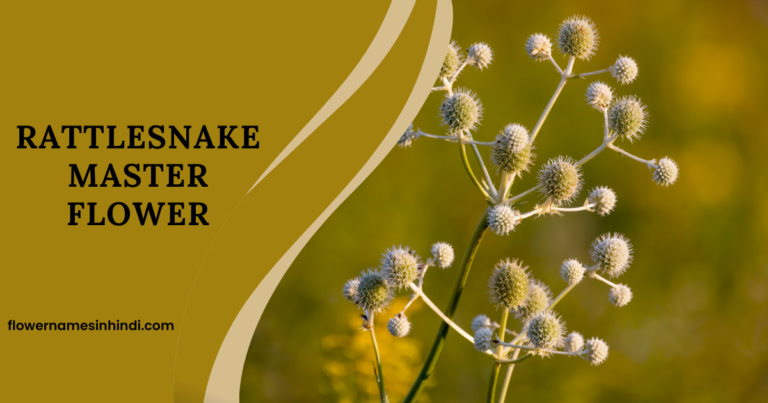
Rattlesnake Master, also called button eryngo and button snake-root, is a perennial herb of the parsley family. The plant is characterized by leathery blue-green leaves with a waxy covering and tiny, spherical, white, or greenish blooms that appear in mid-to-late summer.
The leaves are rigid, long, and thin with a pointed tip, measuring 15-100 cm (0-5 ft) long but only 1-3 cm (0.39-1.18 in) wide. The root system is composed of a core taproot surrounded by thick, fleshy, fibrous roots.
In Native American folklore, the Rattlesnake Master was considered a spiritual protector due to its association with snakebite remedies and the belief that it could offer strength against venomous creatures.
| Feature | Detail |
| Botanical name | Eryngium yuccifolium |
| No. of species | Part of the Eryngium genus, which includes over 200 species |
| Symbol | Strength, resilience, protection |
| Blooming time | Mid-summer to early fall |
| Origin/ Location | North American prairies and open woodlands |
Rue: Flowers That Start With R
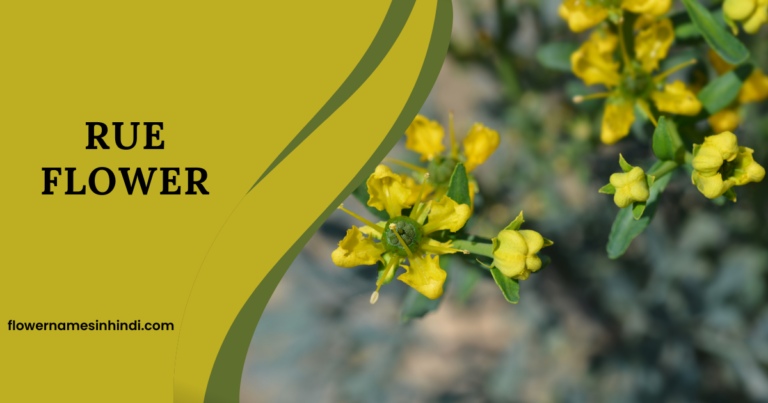
Rue, also known as the herb of grace, is an ornamental plant and herb belonging to the Rutaceae family. It has a history of being used in traditional and herbal medicines. The blooms are tiny, with four to five dull yellow petals arranged in clusters.
It prefers well-drained soil with lots of sunshine, either full or partial shade. It blooms in the summer and can tolerate a soil medium of poor quality.
Rue has a strong, pungent perfume that some people dislike, but it also deters garden pests, making it a valuable companion plant in herb and vegetable gardens.
| Feature | Detail |
| Botanical name | Ruta graveolens |
| No. of species | Part of the Ruta genus, with about 8-10 species |
| Symbol | Regret, sorrow, protection |
| Blooming time | Late spring to early summer |
| Origin/ Location | Southern Europe |
Rock Cress: Flowers Starting With R
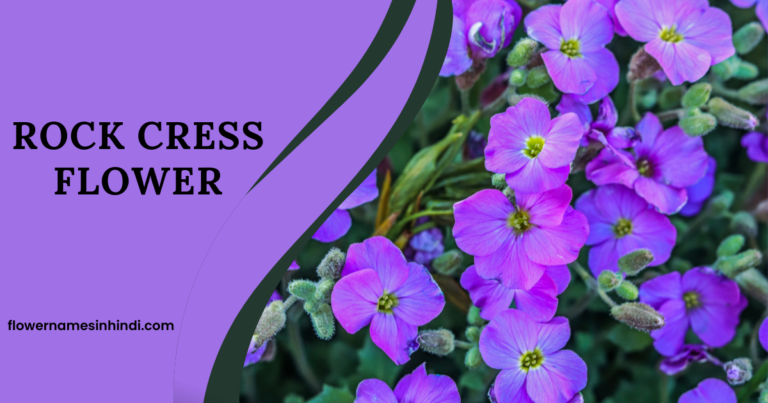
Rock Cress is a beautiful plant that requires low maintenance, making it a favourite among gardeners. They bloom in shades of pink, purple, or white. The species are herbaceous, annual, or perennial plants that grow to 10-80 cm tall.
These are densely hairy, have simple whole to lobed leaves 1-6 cm long, and produce little white four-petaled flowers.
This flower grows best in well-drained soil with full or partial light and makes an excellent backdrop for gardens and borders. It does take the position of having well-drained soil and tolerates rocky or sandy conditions, being appropriate for rock gardens.
Some species, especially in the Brassicaceae family, are rich in vitamin C and were valued by herbalists in alpine regions for supporting urinary health and digestion.
| Feature | Detail |
| Botanical name | Arabis |
| No. of species | Approximately 120 species |
| Symbol | Endurance, resilience |
| Blooming time | Early spring |
| Origin/ Location | Europe, Asia, North America |
Rhododendron: Flowers Starting With R

Rhododendron is a considerable genus of woody plants, included in the health family Ericaceae. They produce cluster bell-shaped flowers that come in pink, purple, red, and white within the same species. T
hey prefer wet, well-drained, acidic soil with a pH range of 4.5 to 6.0, and a thick layer of mulch helps maintain moisture and protect their thin roots.
The trick to growing healthy rhododendrons is to provide adequate soil conditions. Individuals with a naturally higher pH can lower it by adding peat moss or other organic matter.
| Feature | Detail |
| Botanical name | Rhododendron |
| No. of species | 1024 Species |
| Symbol | Beauty, caution, danger (due to some species’ toxicity) |
| Blooming time | Late spring to early summer |
| Origin/ Location | Asia, Europe, North America, Australia |
Rhodora
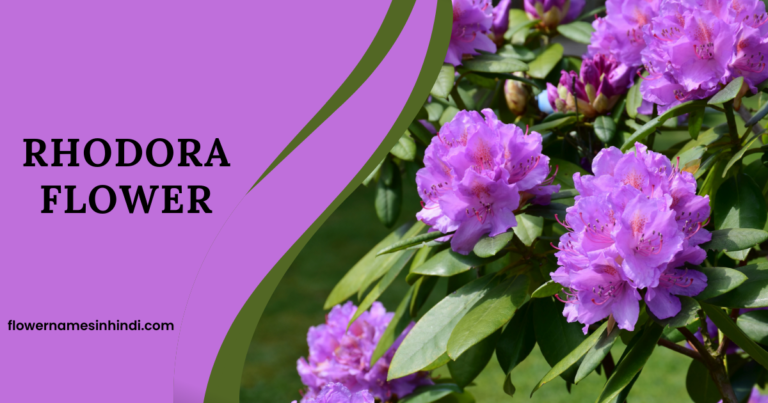
Rhodora, a flowering shrub, reaches a height of 0.5 – 1.2 m (1–3 feet) and belongs to the Ericaceae family. It produces bright pink or purple flowers. The plant grows well on well-drained, acidic soil with moderate shade.
Though Rhodora prefers acidic soil, it thrives in clay-rich soils. Lower the pH of the landscape by adding peat moss or other organic debris. This shrub should be planted in a somewhat sunny location, as direct sunshine scalds it. Rhodora grows best on soil with a pH between 4.5 and 6.0.
Thanks to Emerson’s tribute, the Rhodora became a symbol of natural beauty that doesn’t seek attention, representing the idea that true worth doesn’t need an audience. It embodies the philosophy of inner value, humility, and simplicity.
| Feature | Detail |
| Botanical name | Rhododendron canadense |
| No. of species | Part of the Rhododendron genus, with one main species |
| Symbol | Simplicity, resilience, beauty |
| Blooming time | Early spring |
| Origin/ Native to | Northeastern North America |
Rock Rose – Flowers Starting With R

Rock rose is a genus of the Cistaceae family, which are perennial flowering plants present in dry or rocky soils. Its flowers are of pink, white, and yellow colours, with a centre splotch of darker colour that offers a stunning contrast.
Each flower is short-lived, lasting about a day, but the plant produces so many blossoms that it stays colourful for a long time.
It is also resistant to pests and diseases, making it an easy-care alternative for gardeners. The leaves are evergreen, opposite, simple, generally somewhat rough-surfaced, and 2–8 cm long.
| Feature | Detail |
| Botanical name | Cistus spp. |
| No. of species | 20 species |
| Symbol | Resilience, endurance, overcoming adversity |
| Blooming time | Late spring to early summer |
| Origin/ Native to | Mediterranean region |
Russian sage: Flowers Starting With R

The Russian sage’s previous scientific name was Perovskia atriplicifolia, but it has now been changed to Salvia yangii. This perennial blooming plant belongs to the Lamiaceae family. Its blue or lavender blooms arranged in spiky plumes.
It grows well in poor to ordinary soil and can survive a broad pH range. Most significantly, the location must be well-drained to prevent root rot.
Russian sage should be planted in broad sunshine, with at least six hours of direct exposure.
Its leaves release a pleasant, sage-like scent when brushed or crushed, and were once hung in homes or burned like incense to ward off insects and freshen the air—a nod to both spiritual and practical cleansing rituals
| Feature | Detail |
| Botanical name | Salvia yangii |
| No. of species | 900 species, including Salvia yangii |
| Symbol | Wisdom, courage, healing |
| Blooming time | Midsummer to autumn |
| Origin/ Native to | Central Asia (Afghanistan, Tibet) |
Conclusion of Flowers Starting With R
Every flower beginning with the letter R, brings its own unique beauty, from the bold and vibrant to the soft and delicate. Moreover, they adapt to different growing conditions, and they can also pair with other blooms to enhance aesthetics. These blooms serve as a reminder of the creativity and wonder found in the natural world.
Whether you’re cultivating a garden, arranging a bouquet, or simply admiring from afar. Flowers that begin with the letter R provide endless opportunities to appreciate the richness and elegance of floral life. To read more informative articles about flowers starting with different alphabets, visit our website.
Related Articles:
- Flowers that start with O
- Flowers that start with M
- Flowers that start with P
- Flowers starting with Q



